To discover Mongolia has always been priority on my wishes list. In 2004, finally, this dream became true.
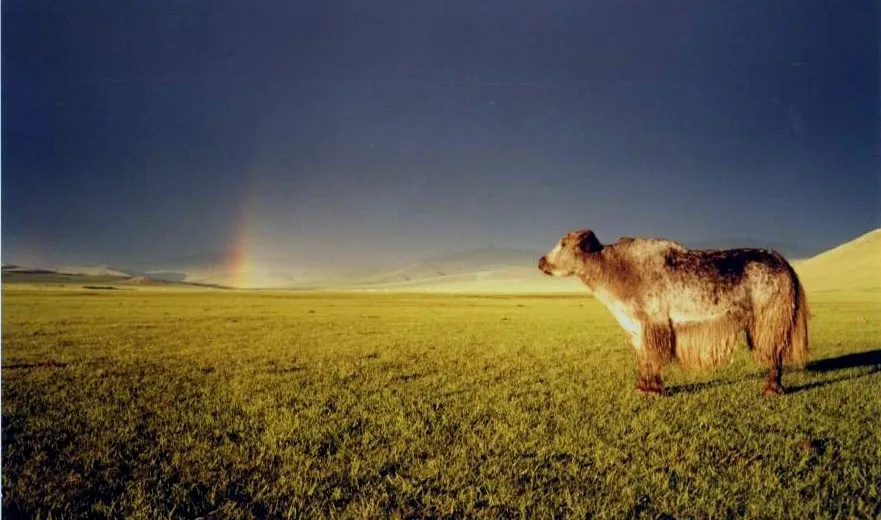
But to travel in Mongolia as the way I wish, as to live with the Mongol nomads, completely, fully in their own routine, through tundras and steppes, requires preparation.
I did not have any notion of equestrian skill. With my husband, we gave ourselves one year to learn horse riding. That lead us both to fell in love with Lavender, a mare we adopted for the rest of her life, but that's another story.
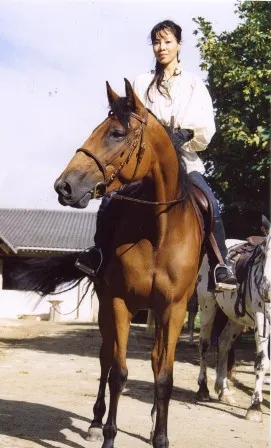
At the end of one year, probably because of his Slav blood, my husband perfectly mastered outdoor riding and as for me, I stuck on saddle without much difficulty. We decided to head to Ulan Baator.
Driven by our adventure’s thirst, we gave up on a guide and planned our own itinerary on the map alone, from the West to the South East of Mongolia. Not speaking Mongolian, we then hired an interpreter, Berska. We also hired a "horseman" who gave us horses and a good pack mare.
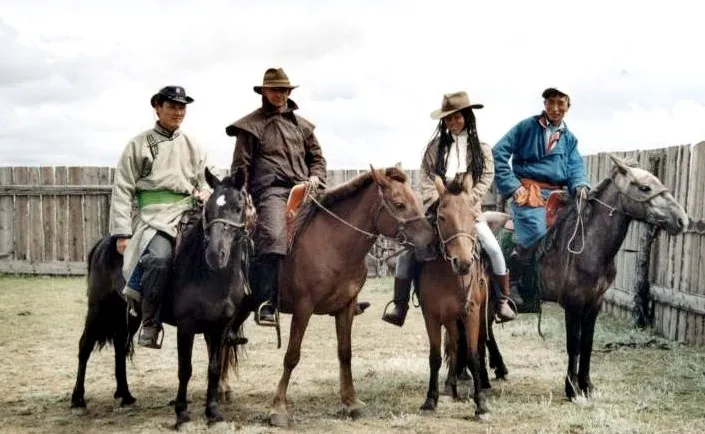
Le team
We began our itinerary from the Khovskhol area, near the Khadkhal Lake, famous for reindeer herders living there on winter.
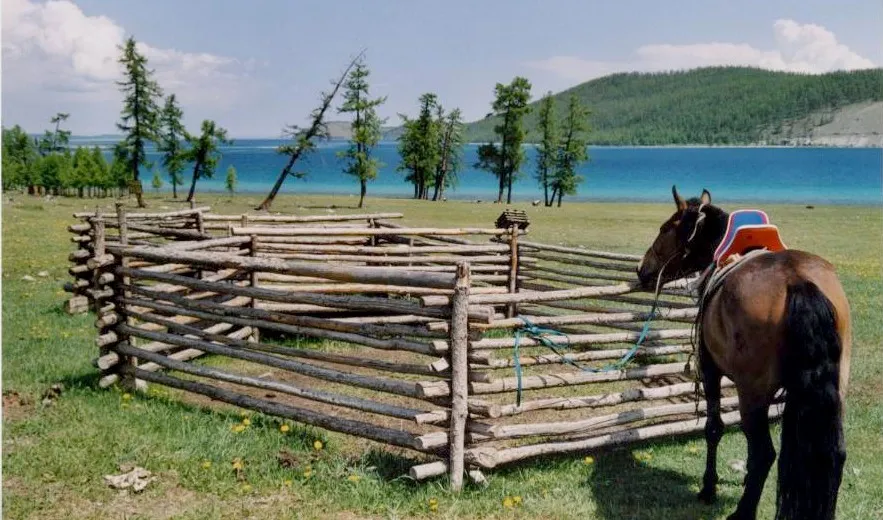
In the "tourist" camp of the city, some comfortable yurts were made available to the few tourists who stayed in Khadkhal.
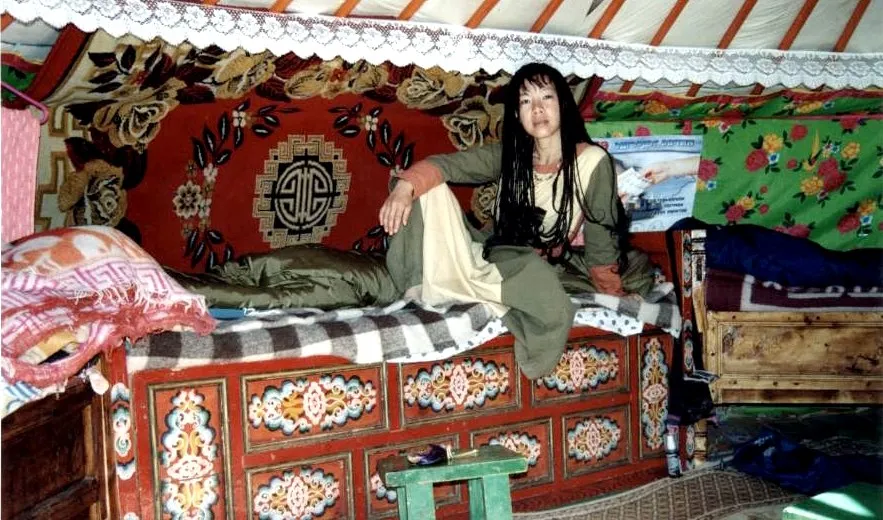
When I inquired about the bathroom, a tank with a tap has been dragged out in the middle of the courtyard (huh? Intimacy? What intimacy?) ... The tank was empty. To my husband, he was given a cart pulled by a cow and the direction of the lake was indicated with the tip of the finger ... yes, it meant: "Here, go fetch some water for your wife”. What he did without complaining ... He IS a good husband.
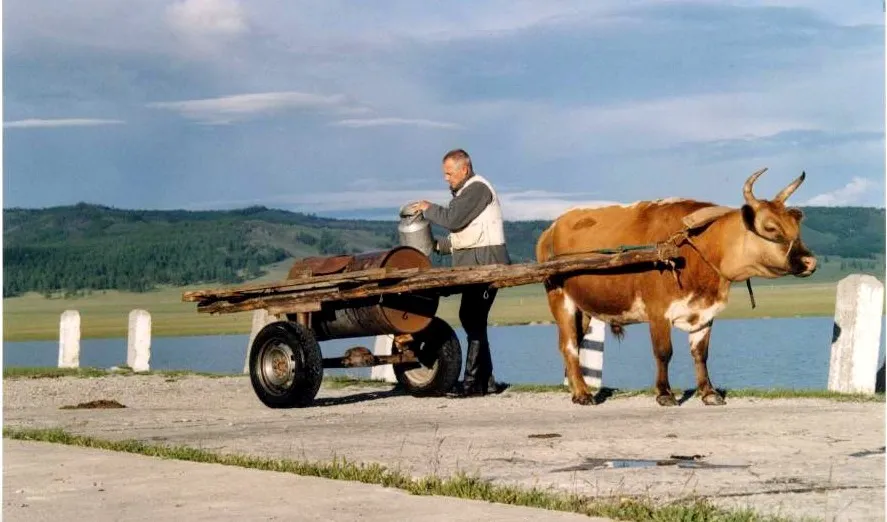
Our first day of trek was memorable: we did not go very far ... In fact, our packmare was sturdy and docile, her only flaw was that she had never worn a pack before. When she received her charge, and as soon as released, she headed to the horizon with flying hooves! It took few hours to bring her back.
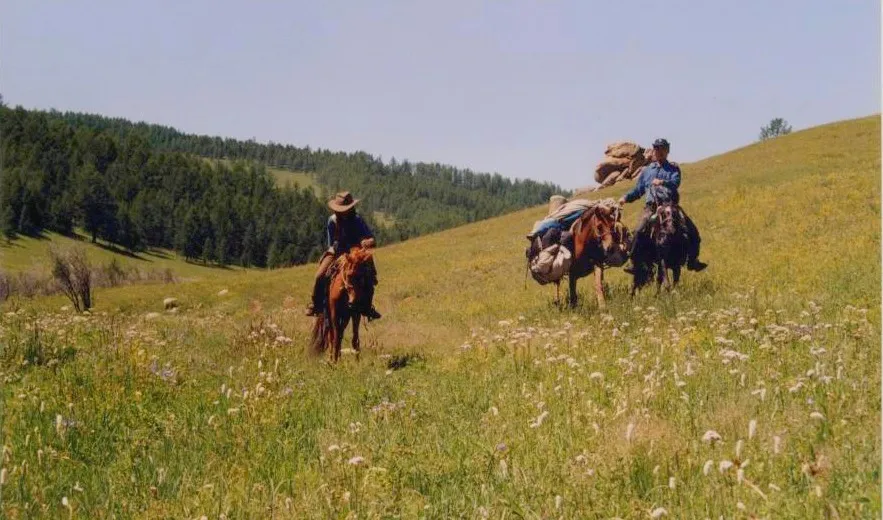
After that, we were able to start our journey for ... a few kilometers. Again, during a "pee" stop, my horse pushed me while I was squatting, to take the runaway. It took few more hours to find him, reins snatched and in a awful state. Our first day stopped there, due to rodeo training.
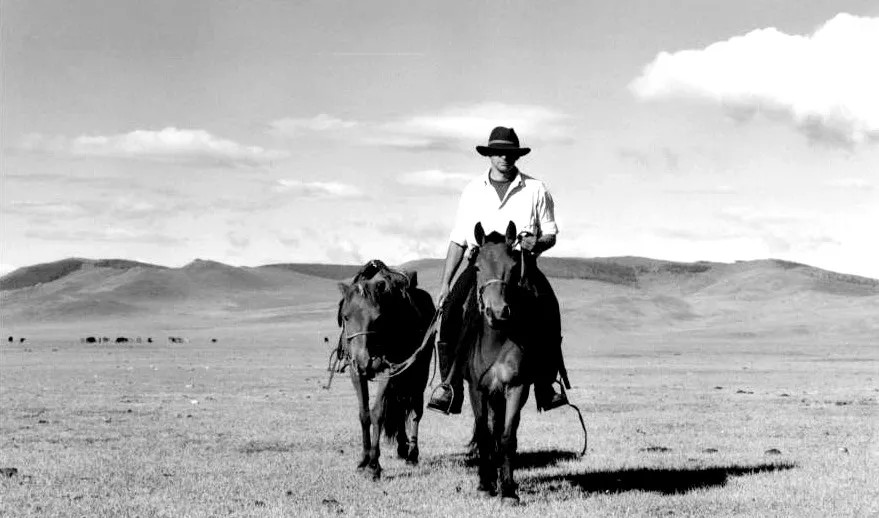
de retour avec le cheval échappé
Furthermore, the horses being left half wild to be able to defend themselves against the wolves at night, it took us three days before we could establish a harmonious communication between horse and rider. I admit that after that, our horses never left us, even reins released. Indeed, not being accustomed to caresses, they were so surprised to receive so much care from us that they stuck to us firmly.
The following days saw us tough in the art of living in the steppe. Steppe children since we were horse riders, all the yurts were open to us ... We had to learn the protocol code to enter a yurt, the one to beat the airak, fermented mare's milk, the one to mount one’s horse, the one to approach an inhabited area, the one to exchange the snuffbox during meetings, etc ... The respect of these protocols opened us the Mongol heart and kindness. We then discovered a proud community, infinitely generous and caring for others, free and ... using very little money trade. They live essentially on barter and their very organized nomadism weaves an impressive exchange web.
The way of living of the nomads community has not much changed since Gengis Khan Age : Every morning, a Mongol look upon the horizon, searching his horse herd.
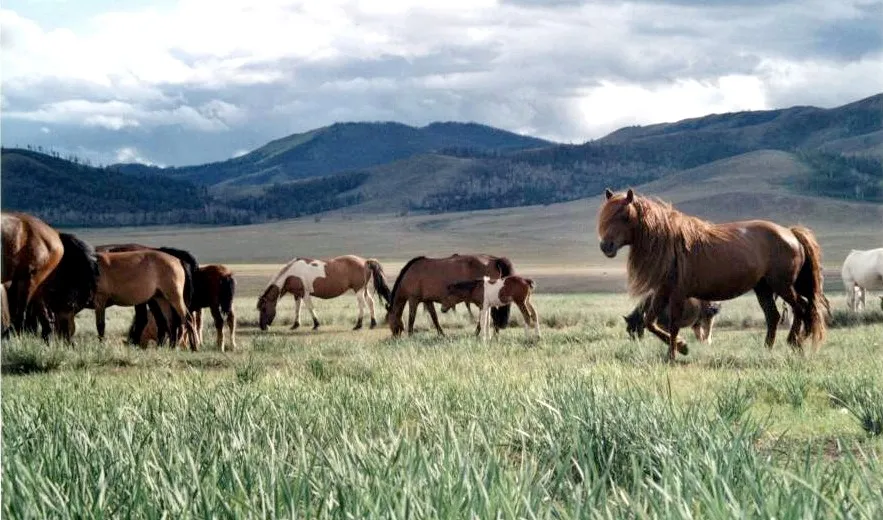
When I asked why they don’t keep their herd within fences, they told me that first, they don’t want to hurt the land with fences and second, horses need to go free in their steppes, otherwise, they would not be horses anymore but mere cattle.

Our days usually began by choosing the direction of the trip according to the geographic structure, because there is no road. We had to locate on the map or by information the water spots for the horses.... Then, 25 to 30 kms per day riding, we hoped to find a yurt or two for our night bivouac. If no yurt was found, then, we settle the bivouac in the middle of nature, with its flora and especially ... its fauna. The horseman was always sleeping outside with his horses, in case of wolf presence. Hence the high interest of the "dell", this great crossover coat that can be also seen in Tibet. It is the pantry, the bedroom, the bathroom (the steppe is flat and you can see far, very far, there is no way hiding behind a bush), the tent, etc ...
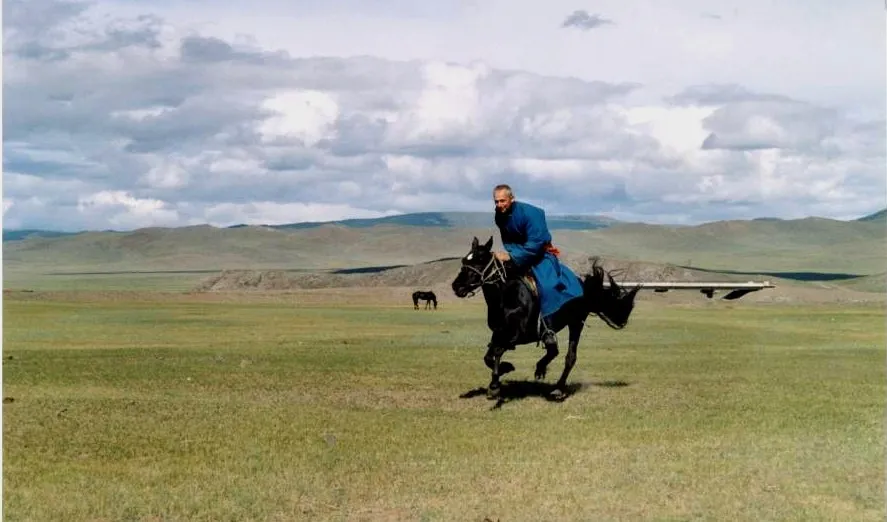
But I will end here my introductory text, to let you enjoy the photos, taken with an old film camera Nikon FE2, our last “paper photo trip”.
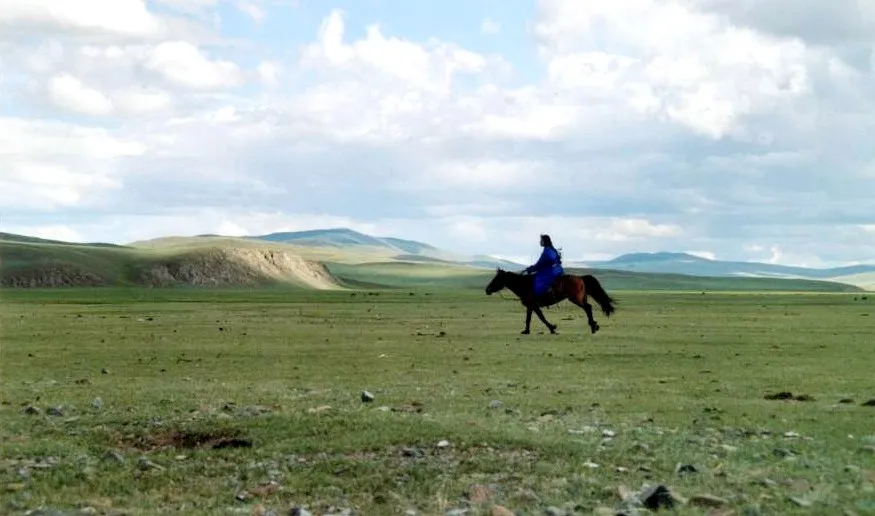
your Tiloupsa, in the steppes


Cheese making
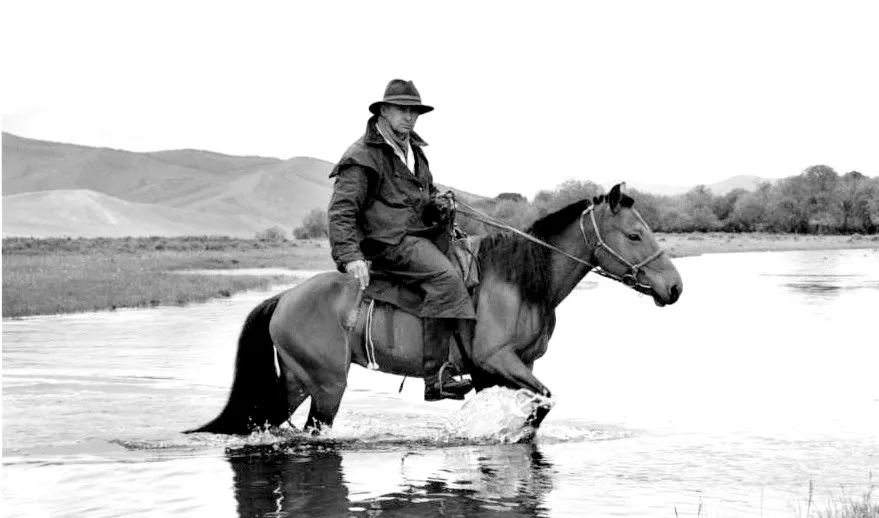
lonesome cowboy
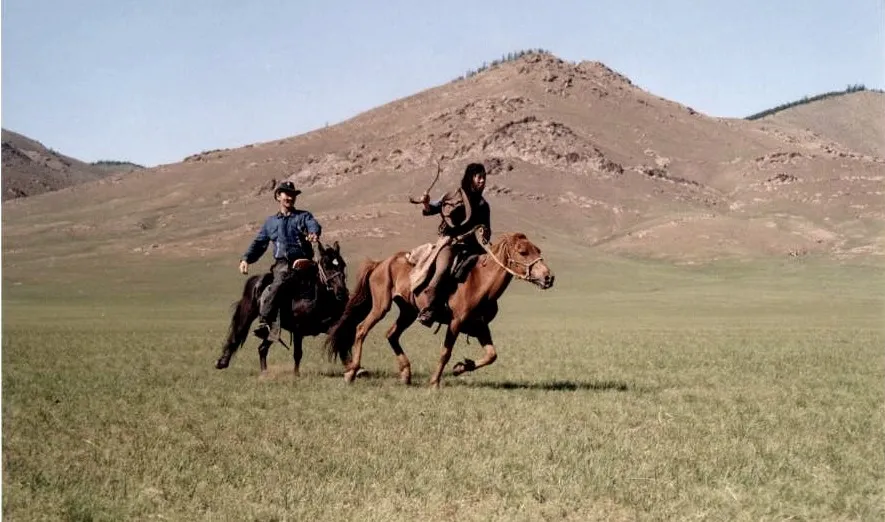
Your Tiloupsa in a race
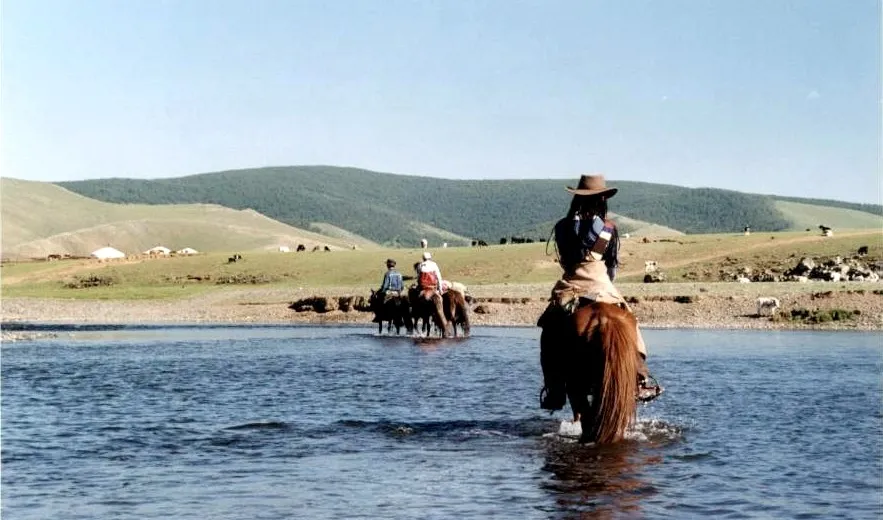
river crossing
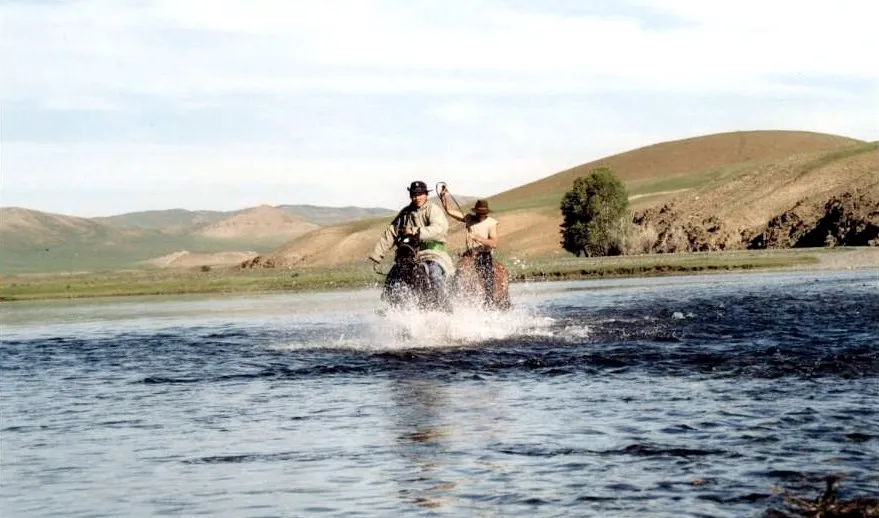
water play
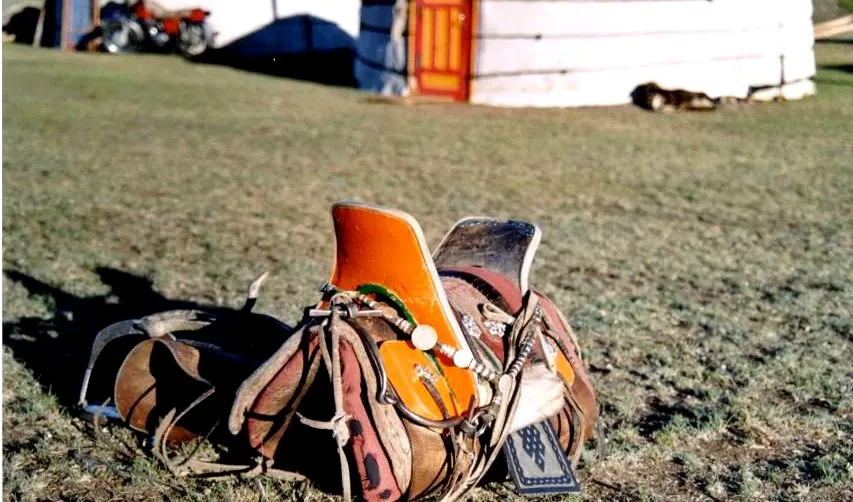
*Mongolian saddle, wood and recovered with plain wool, more than 17 days horse riding with those, aie aie *
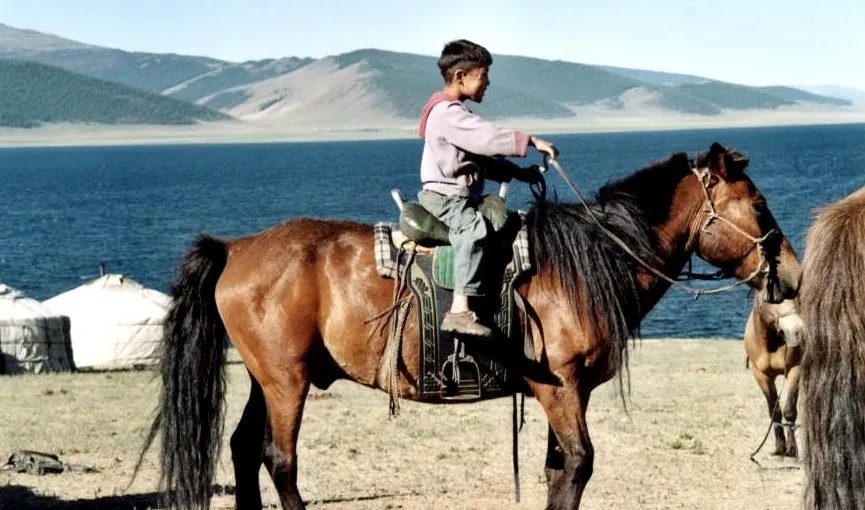
Mongolian children

Nadam race (Etalions are with the little ponytail on their head)
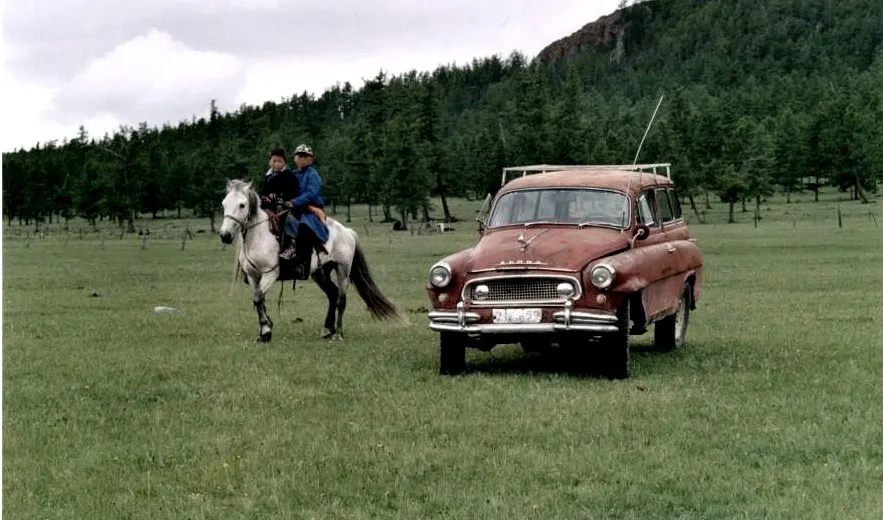

Mongolian adults, proud with their steal horse
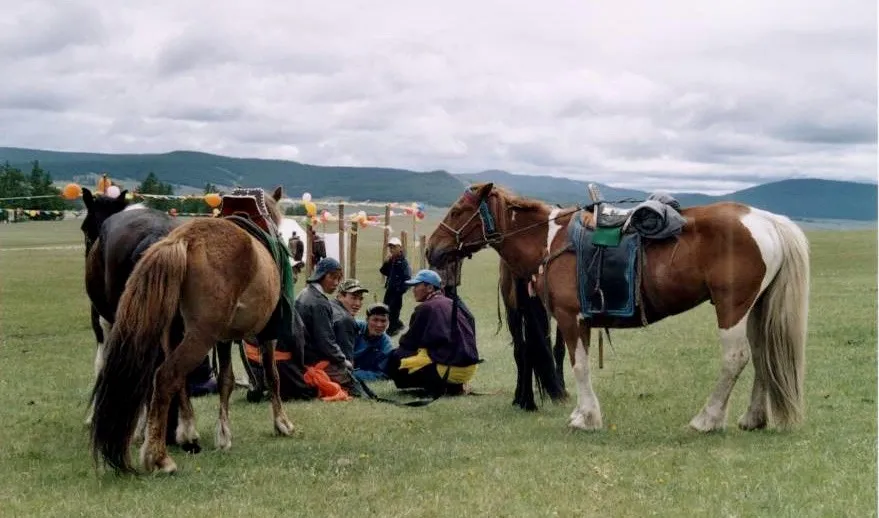
race gathering
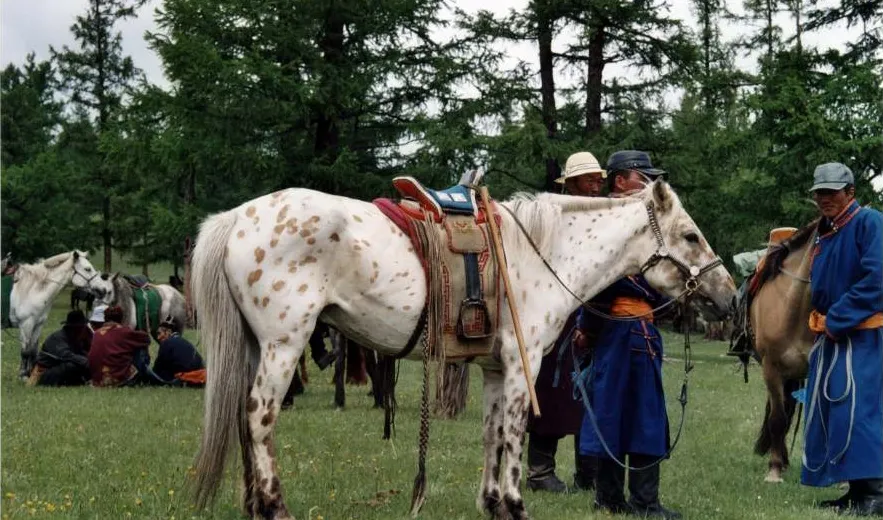
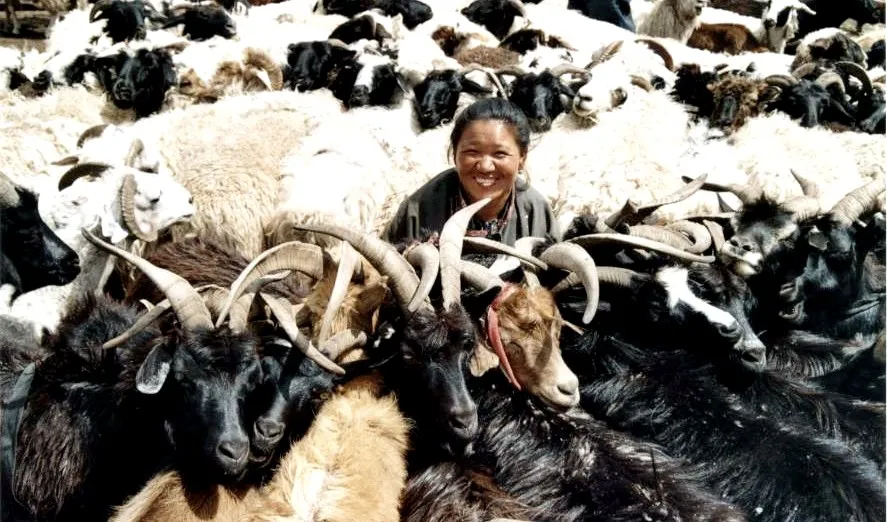
Let's share the milk of our happiness, (no fruit in the steppes)
Thank you for your attention and see you soon for other adventures !